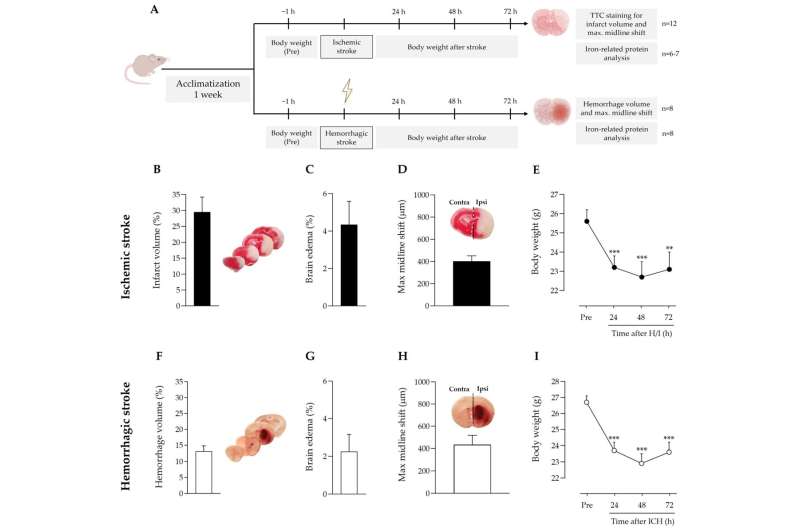This article has been reviewed according to Science X's editorial process and policies. Editors have highlighted the following attributes while ensuring the content's credibility:
fact-checked
peer-reviewed publication
proofread
Apotransferrin shows promise as an early treatment for stroke

Researchers from Germans Trias i Pujol Research Institute (IGTP) have discovered that administering human apotransferrin to mice models affected by intracerebral hemorrhage can mitigate the damaging effects of this severe type of stroke. This finding highlights the promising role of apotransferrin as a pre-hospital and pre-triage frontline treatment for all stroke patients. The study has been published in the journal Antioxidants.
Stroke is a leading cause of disability worldwide. This medical condition has two primary forms: ischemic, caused by a blockage cutting off the blood supply to the brain, and hemorrhagic, characterized by bleeding within or around the brain. Scientists have been on a quest to find effective treatments that can mitigate the after-effects that many stroke patients suffer.
When a brain blood vessel ruptures, the leaked blood releases iron from hemoglobin, causing severe oxidative damage to the brain. This iron overload sets off a chain reaction of stress on the brain cells, leading to their death and resulting in loss of brain function in the affected regions.
Historically, the detrimental effects of excess iron in the brain following a stroke have been well documented. Attempts to counteract this with iron-binding treatments have been made, with iron chelators -drugs used to treat iron overload from frequent blood transfusions- like deferoxamine being considered for their protective potential in stroke cases.
Building on this concept, previous research conducted by IGTP's Cellular and Molecular Neurobiology (CMN) group, led by Dr. Teresa Gasull and Dr. Octavi Martí-Sistac, demonstrated the protective effects of the protein apotransferrin in models of ischemic stroke. Unlike deferoxamine and other drugs with fleeting lifespans in the bloodstream, apotransferrin offers a prolonged protective window due to its extended half-life, marking a significant stride over transient treatments.
In their latest study in mice, the team used this protein on the less-studied yet more devastating type of stroke: intracerebral hemorrhage. The study reveals the benefits of an apotransferrin-based treatment in mitigating the damaging effects of this cerebral event.
Researchers have found that apotransferrin's role in guarding against ferropoptosis—an iron-dependent cell death process recently described—could represent a turning point in how strokes are treated in the early stages, especially en route to the hospital, providing critical intervention during the golden hour.
"The study paves the way for further research to determine the therapeutic potential and safety profile of apo transferrin in clinical studies in stroke patients," concludes Alexia García-Serran, a predoctoral researcher at IGTP and first author of the study.
More information: Alexia García-Serran et al, Targeting Pro-Oxidant Iron with Exogenously Administered Apotransferrin Provides Benefits Associated with Changes in Crucial Cellular Iron Gate Protein TfR in a Model of Intracerebral Hemorrhagic Stroke in Mice, Antioxidants (2023). DOI: 10.3390/antiox12111945




















